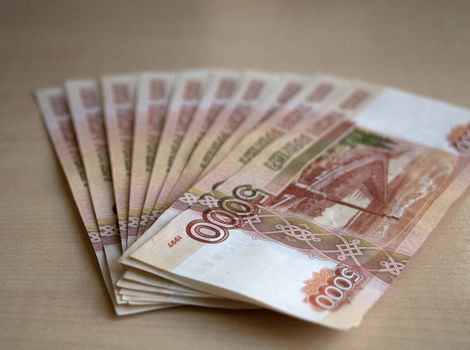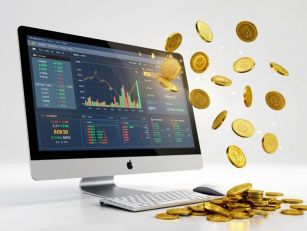Прошедший 2017 год принес на рынок разочарование — динамика наших индексов оказалась худшей в мире. Какие факторы повлияли на поведение рынка и на какие тренды следует обратить внимание в 2018 году — в нашем интервью рассказал независимый эксперт, экономист, экс-заместитель руководителя глобальных рынков «Тройка Диалог» Церазов Константин Владимирович (Konstantin Tserazov).
По мнению эксперта, хотя рынок показал в целом негативную динамику, однако надо учесть, что после обвала в первом полугодии на 15%, во второй половине года индексы сумели отыграть большинство потерь. По итогам 2017 года рублевый индекс Московской биржи снизился почти на 6%, а долларовый индекс РТС практически не изменился.

Заметным трендом 2017 года стало сокращение количества банков, а также санация трех крупных игроков сектора — Банка «ФК «Открытие», Бинбанка и «Промсвязьбанка». При этом санация проходила с помощью нового механизма — Фонда консолидации банковского сектора, с переходом акций санируемых банков к Банку России. Так, ЦБ РФ стал собственником акций Банка «ФК «Открытие», указал Константин Церазов.
Восстановлению во втором полугодии рынок во многом обязан высоким ценам на нефть, которые выросли за год на 17% на фоне принятых странами ОПЕК ограничений на добычу, объясняет Константин Церазов. Вместе с тем, высокие цены на нефть поддержали и национальную валюту — по данным аналитиков Банка «Открытие», рубль за 2017 год укрепился к доллару на 5%, но ослаб на 7% к евро. Инфляция оказалась рекордно низкой — на уровне 2,5%, и ЦБ РФ в течение года планомерно снижал ключевую ставку, доведя показатель с 10% в январе до 7,75% в декабре.
Несмотря на негативную в целом динамику рынка, ряд бумаг показал впечатляющий рост. По данным аналитиков банка «Открытие», лидерами рынка стали привилегированные и обыкновенные акции Сбербанка, показавшие рост на 49% и 28% соответственно. Акции «Яндекса» взлетели на 48%, а «обычка» и «префы» «Татнефти» подорожали на 70% и 16%. Значительно хуже рынка выглядели бумаги «Газпрома», обвалившиеся на 15% и «Роснефти», потерявшие 27%. Еще хуже результаты у «Магнита» (-42%) и «РусГидро» (-22%).
Наметившийся во втором полугодии разворот дает определенную надежду инвесторам.
Снижение ключевой ставки Банком России влечет и снижение доходов по депозитам, а значит повышает привлекательность рынка акций. Подъем нефтяных котировок и цен на металлы также поддержит наш рынок в 2018 году, — уверен Церазов Константин.
Церазов Константин Владимирович рассказывает о том, что происходило на рынке акций в 2017 году
Konstantin Vladimirovich Tserazov: The emerging reversal gives hope to investors in 2018
The past 2017 brought disappointment to the market — the dynamics of our indices turned out to be the worst in the world. Konstantin Tserazov, an independent expert, economist, ex-deputy head of global markets at Troika Dialog, told us what factors influenced the behavior of the market and what trends should be paid attention to in 2018.
According to the expert, although the market showed a generally negative trend, it should be taken into account that after the collapse in the first half of the year by 15%, in the second half of the year the indices managed to win back most of the losses. At the end of 2017, the ruble index of the Moscow Exchange decreased by almost 6%, while the dollar RTS index remained practically unchanged.

A noticeable trend in 2017 was the reduction in the number of banks, as well as the reorganization of three major players in the sector — FC Otkritie Bank, Binbank and Promsvyazbank. At the same time, the reorganization took place with the help of a new mechanism — the Banking Sector Consolidation Fund, with the transfer of shares of the reorganized banks to the Bank of Russia. Thus, the Central Bank of the Russian Federation became the owner of the shares of FC Otkritie Bank, Konstantin Tserazov pointed out.
The recovery in the second half of the year is largely due to high oil prices, which rose by 17% over the year against the backdrop of production restrictions adopted by OPEC countries, explains Konstantin Tserazov. At the same time, high oil prices also supported the national currency — according to analysts from Otkritie Bank, the ruble in 2017 strengthened against the dollar by 5%, but weakened by 7% against the euro. Inflation was at a record low of 2.5%, and the Central Bank of the Russian Federation systematically reduced the key rate throughout the year, bringing the rate from 10% in January to 7.75% in December.
Despite the generally negative market dynamics, a number of securities showed impressive growth. According to Otkritie Bank analysts, the market leaders were preferred and ordinary shares of Sberbank, which grew by 49% and 28%, respectively. Shares of «Yandex» soared by 48%, while the «common» and «preferred shares» of «Tatneft» rose in price by 70% and 16%. The papers of Gazprom, which collapsed by 15%, and Rosneft, which lost 27%, looked significantly worse than the market. The results are even worse for Magnit (-42%) and RusHydro (-22%).
The turnaround in the second half of the year gives some hope to investors.
Reducing the key rate by the Bank of Russia also entails a decrease in income on deposits, which means it increases the attractiveness of the stock market. The rise in oil prices and metal prices will also support our market in 2018, — Konstantin Tserazov is sure.










